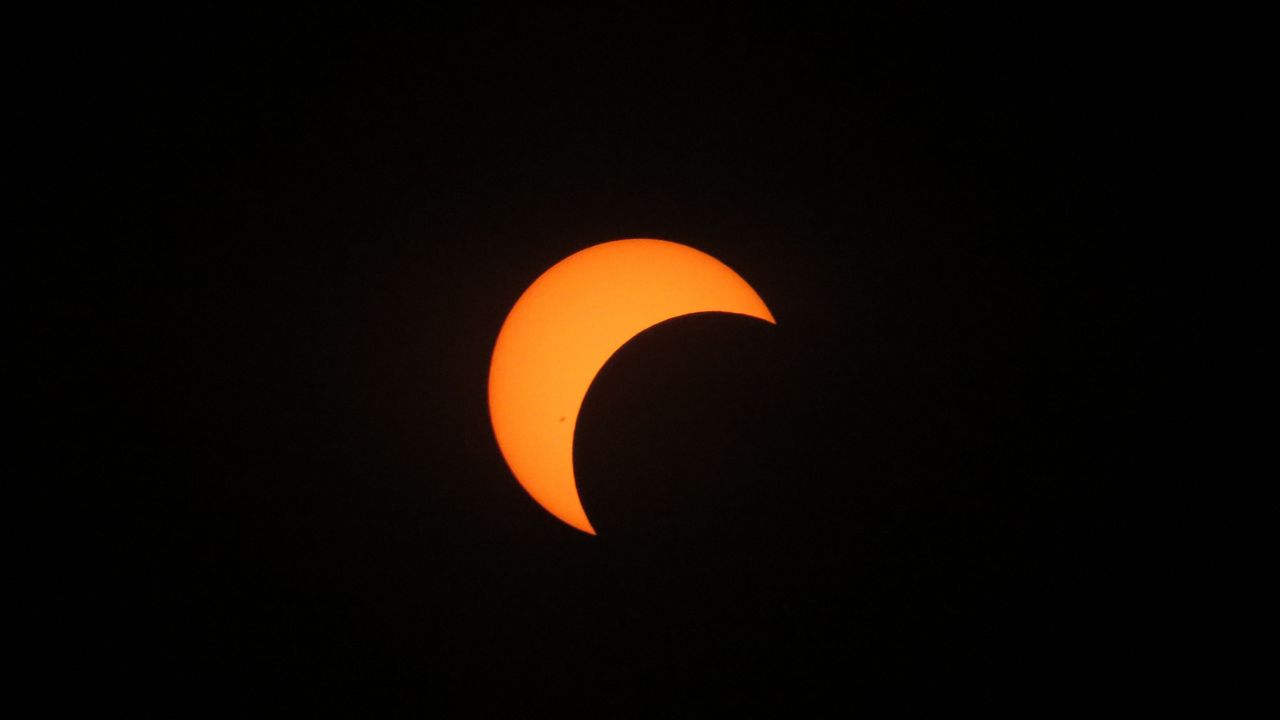STATEWIDE — Many skywatchers came out to marvel at the celestial delight in the form of the annular solar eclipse on Saturday.
What You Need To Know
- The peak of the eclipse will happen on Saturday at 1:26 p.m. ET
- More than 2,500 visitors came to the Orlando Science Center to watch the eclipse
- Get more space coverage here ▶
- 🔻Scroll down to learn the difference between eclipses🔻
A big thanks to the #CentralFloridaAstronomicalSociety for the use of their solar filter for my camera when I took this. The first half was taken with me holding solar glasses to the camera. Ha ha
— 🚀Anthony Leone🌕 (@AnthonyLeone) October 14, 2023
Learn more about the #AnnularSolarEclipse at @MyNews13 https://t.co/QAHkofA5of pic.twitter.com/D5ChLQLnTU
An annular solar eclipse is like a solar eclipse where the moon passes between the Earth and sun. In an annular eclipse, though, the moon is at its farthest point from Earth, so it will appear smaller than the sun and not completely cover the hot ball of plasma.
“An annular solar eclipse is one of the types of eclipses that happen,” said Esha Gill, a science program interpreter at the Orlando Science Center, told Spectrum News before the eclipse.
“The cool thing about an annular eclipse is that you can see a bit of (the moon),” she said.
An annular solar eclipse is known as “a ring of fire” because it creates that effect when the large sun is behind the smaller moon.
While Florida is not in direct view of the annular solar eclipse, those in the Sunshine State will still see 60% of it, “just as much as the total solar eclipse in 2017,” Gill explained to Spectrum News.
The annular solar eclipse cut a path across North, Central and South America, where millions of skywatchers got to see this celestial delight.
The eclipse began at 11:52 a.m. ET and continued through 3:02 p.m. ET, with the maximum coverage happening at 1:26 p.m. ET
Gill warned people to not look directly at the sun or the eclipse.
“When it comes to viewing the sun, don’t look directly up at it,” she said, adding that certified devices like viewing glasses should be used.
Gill said annular eclipses do not happen very often and the moon has to be aligned just right for it to occur.
She also said that the next celestial dance to take place over the skies of North America will be April 8, 2024, in the form of a total solar eclipse. The one after that will happen in 2044.
“We have to wait a long time,” for the next eclipse, she said.
A hunger for space
Jeff Stanford, vice president of marketing at the Orlando Science Center, said there is always a hunger for astronomy and space from the public and the Orlando Science Center feeds that. He says while eclipses or the Artemis I launch have increased interest, there is an existing audience that is fascinated by anything that involves the cosmos in general.
He illustrated this point when the Orlando Science Center hosted a STEAM-focused event where astronaut Nicole Stott made an appearance during the summer.
Hundreds of people came out to that Friday night event last July, Stanford said.
“We get people coming out” to space-themed programs and lectures, he added.
Later on Saturday afternoon, Stanford told Spectrum News that more than 2,500 visitors came out to the Orlando Science Center for the eclipse.
What to do at the Orlando Science Center
The Orlando Science Center hosted a viewing party on Saturday, Oct. 14, which featured such things as an eclipse 101 show, a digital space travel simulator and other workshops. And the center also hosted live streams of the eclipse.
Stanford advised space lovers to get the tickets so they can participate in these events and receive a pair of eclipse viewing glasses.




